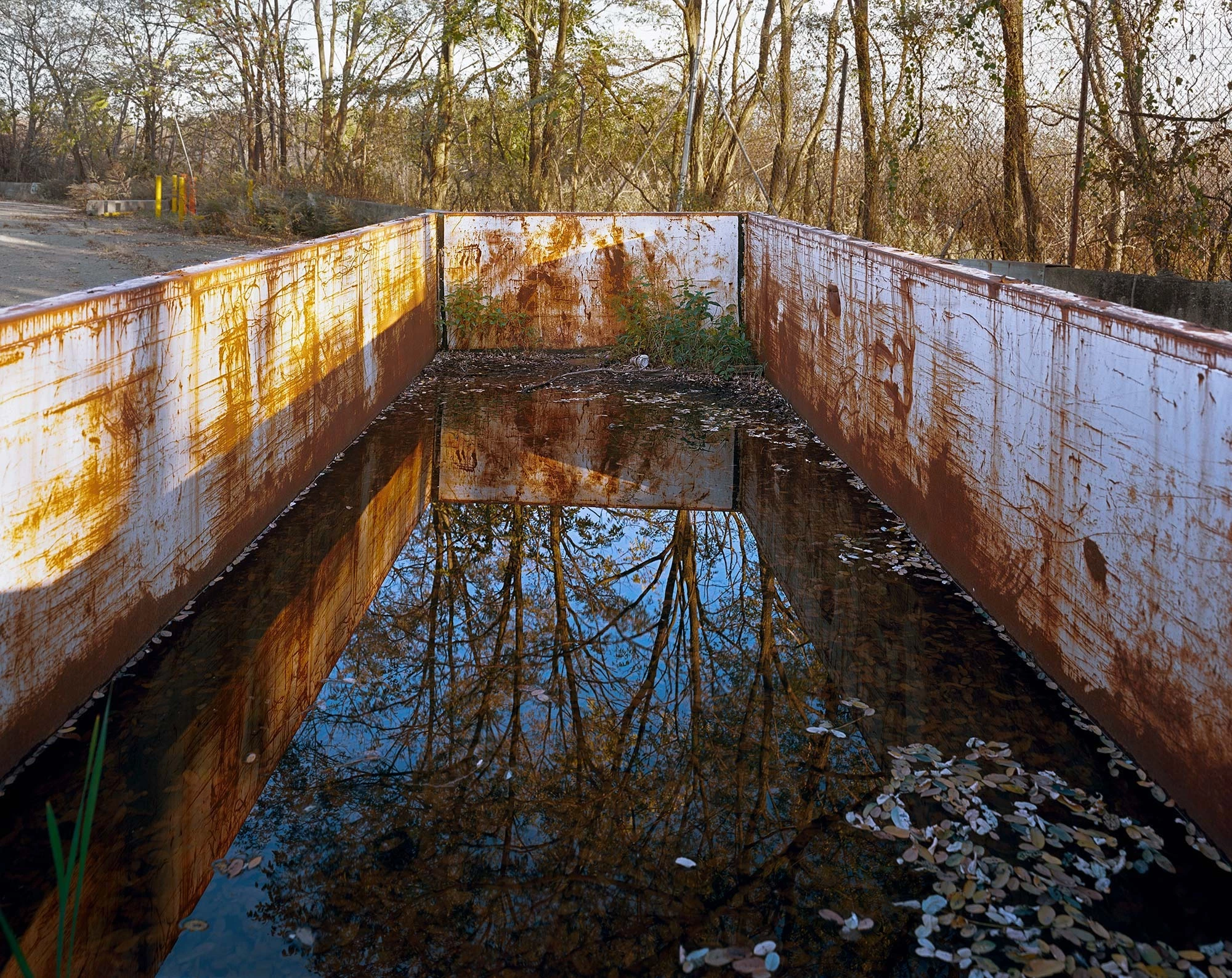
Mesmerized by what she saw, Doskow connected with Mariel Villeré, then the manager for programs, arts, and grants at Freshkills, and submitted a proposal for a decade-long documentation of the site before its anticipated 2036 full opening to the public. Four months later, her proposal was accepted. Last year, after five years of exploring the site and its operations with escorts, she was given independent access to the grounds and the title of photographer-in-residence. Once a week, she packs her large- and medium-format cameras and slowly drives the park’s roads, “with all the windows down and my sunroof open,” looking for anything—unexpected topography, Sanitation staff members’ activity, even an incoming weather system—that catches her eye.
New York City opened the Fresh Kills landfill, located on a stretch of marshland along the western shore of Staten Island, in 1948. Its darkly appropriate name is a false cognate: kill derives from a Dutch word for creek or stream, and the area is home to a freshwater estuary, a complex, dynamic natural habitat for fish and migratory birds. Staten Islanders were promised that the landfill would be a temporary solution to the city’s growing waste problem. Instead, Fresh Kills’s heaps grew for decades. When the site finally closed for good in 2001, after accepting the wreckage from the September 11 World Trade Center attacks, it held an estimated 150 million pounds of refuse that generated mass quantities of leachate and landfill gas, the latter of which was collected, refined into methane, and sold to the local utility. For the past 24 years, the city has undertaken the considerable task of transforming Fresh Kills landfill, long regarded by the borough’s communities as a toxic blight, into Freshkills Park.
The endeavor, as Doskow explains it, is part massive land-art project, part scientific marvel. The park’s design is by the Field Operations landscape architecture firm, which worked on Manhattan’s High Line and Brooklyn’s Domino Park. Freshkills evokes an airy, largely untouched wilderness, albeit one with sophisticated drainage systems and an active leachate treatment plant. The landfill’s mounds—North, East, South, and West—have been transformed by layers of protective barrier, soil, and grasses that can grow up to eight feet tall, but remain idiosyncratic.
